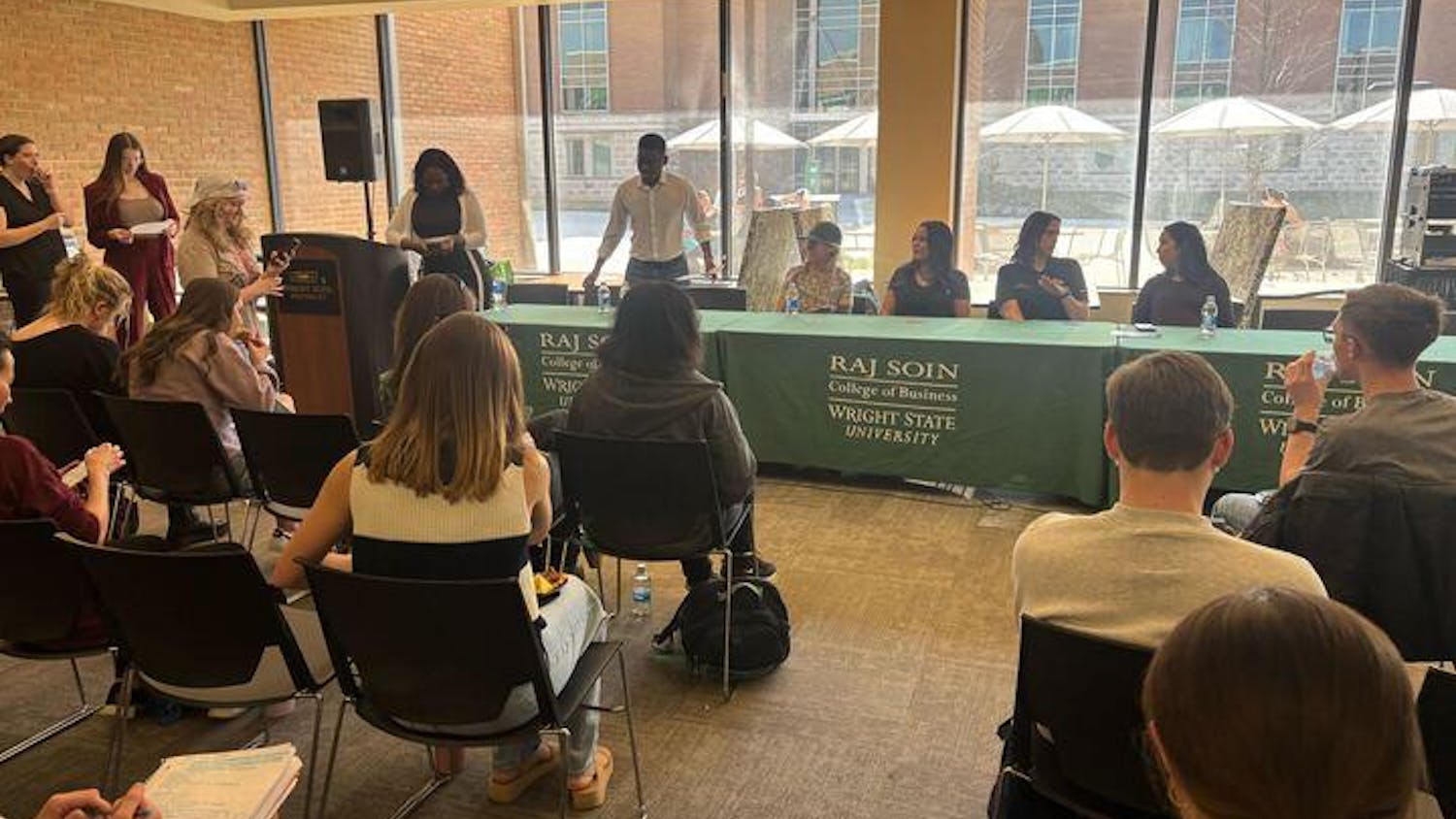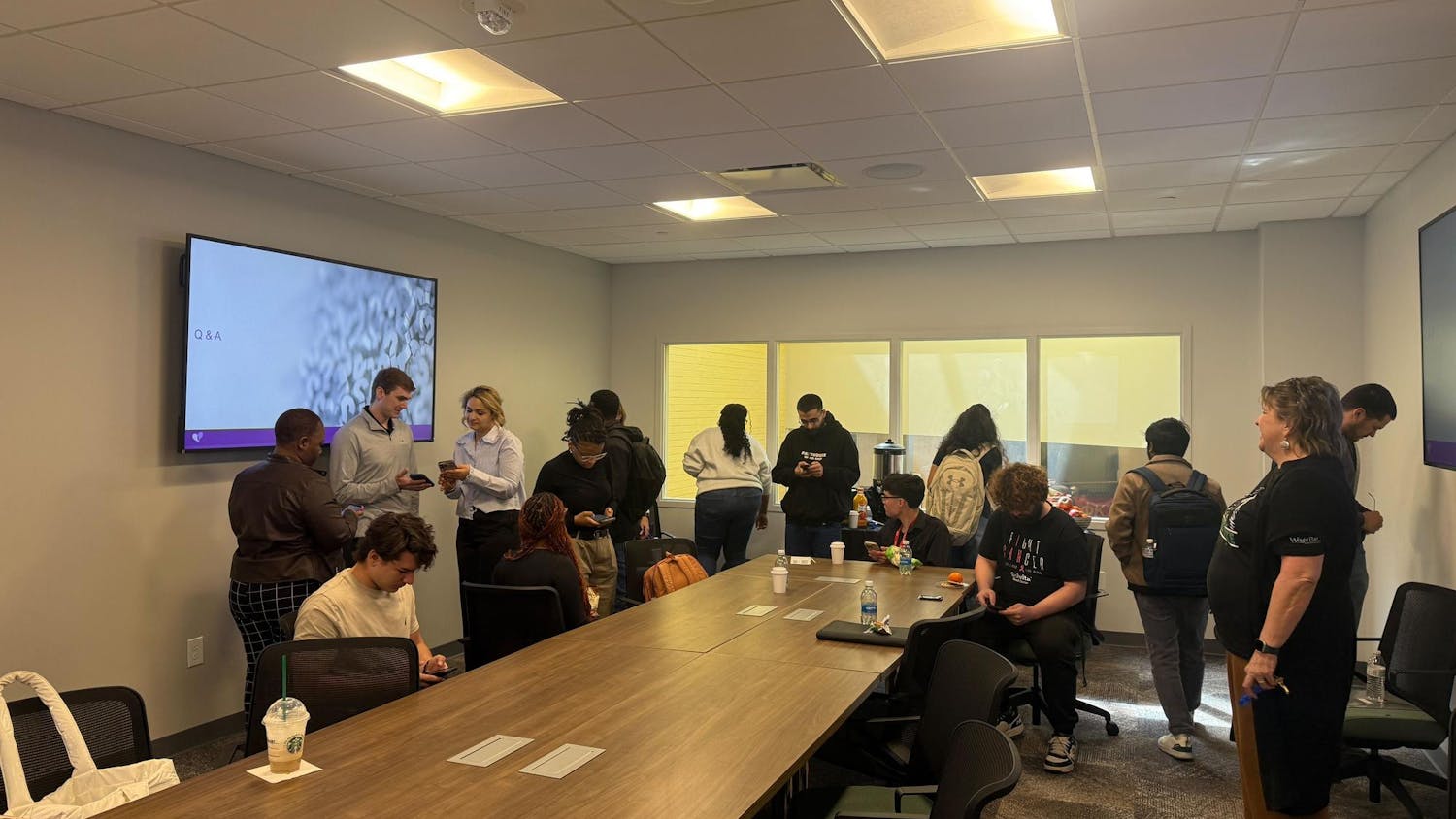Wildflower Planting | Photo by Alexis Lewis | The Wright State Guardian
Wright State University students, staff and faculty embarked on a native wildflower planting project outside of Fawcett Hall to educate the community and increase biodiversity on campus.
Inspiration and taking off
During the onset of the COVID-19 pandemic, Brad Kerry, the event coordinator for the Indigenous American Culture Student Association and president of Astronomical Collaboration, noticed that the landscaping at Wright State was suffering. As a student with undergraduate and graduate degrees in economics, Kerry sought out ways to reduce university expenditures while also enhancing the physical aesthetic of the university.
Despite some setbacks in the planning stages, such as budget constraints, scheduling issues and physical limitations, Kerry proposed that a 200-square-foot space in front of Fawcett Hall be turned into a wildflower garden. The Facilities Supervisor for Grounds, Michael Newby, was very receptive to the idea, according to Kerry. Newby was unavailable for comment at this time.
As a collaboration between the Asian and Native American Center, the Asian and Indigenous American Council and IACSA, Kerry saw this project as a way to educate the community during a social engagement event.
“Indigenous students, we are here. We are not history, we are present,” Kerry said.

Planning and execution
Kerry and the event planners employed the help of Dr. Don Cipollini, the Director of Environmental Sciences and Professor of Biology at WSU. With experience in both research and practice working with native plants and plant restoration, Cipollini was able to provide Kerry with advice about the wildflower planting project.
After receiving advice from Cipollini and other environmental science and facilities faculty, the groups decided to plant Purple Coneflower, Black-eyed Susan and Nodding Onion, among other native species.
The event
About 15 students from a wide range of majors, including acting, psychology, sports science, biomedical engineering and earth and environmental science, arrived bright and early to start the project. Many students, including Lilly Buck, a musical theater major who attended the event, are interested in the beautification of campus alongside the restorative effects of wildflower planting.
Another student, Anna Jones, wanted to not only be in nature and give back to the environment but also wanted to get involved and be present on campus.
Anthropology professor Dr. Lance Greene and Assistant Director of the Asian and Native American Center Dr. Nicolyn Woodcock also lended a helping hand. With so many people working together, the first phase of ivy removal took about one hour. Buck commented on the team effort.
“We are all just working as a team, and many hands make light work,” Buck said.
Benefits and impact
Cipollini explained that the stereotypical American lawn is a fairly sterile environment, so doing a project like the IACSA wildflower planting has many ecological benefits.
“Anytime you can replace [a sterile environment] with a diversity of plants, native plants in particular, you're greatly enhancing the value of that land, that area, that spot for biodiversity,” Cipollini said. “Any little chance we have of replacing some of that or restoring some of that, we should do it.”
There are other locations of projects like the IACSA wildflower plot around campus, including prairie plant restorations between the Nutter Center and Mini University, the campus woods and a water retention garden near the Student Success Center. Kerry commented on the impact that this type of restoration and environmental advocacy can have in the world.
“With habitat loss that we're seeing right now all across the nation and all across the world, it's a good way to make a small and local change, a little baby step in the right direction,” Kerry said.
The Wright State community can expect to notice these changes in about two to four weeks as the flowers start sprouting and blooming. Despite the heat and messy nature of the planting project, the students were able to have fun, learn about native plants, give back to the land and community, get involved and beautify Wright State’s campus one seed at a time.












